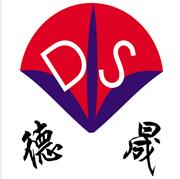Product Categories
- Enzyme(14)
- Carbomer(2)
- Blood collection tube additives(12)
- trinder's reagent(9)
- Biological buffer(21)
- Chemiluminescence reagent(9)
Contact Supplier
| Hubei xindesheng Material Technology Co., Ltd | |
|---|---|
| Country: | China |
| Tel: | +8618971041571 |
| E-mail: | zjing9632@gmail.com |
| QQ: | 2198447049 |
| Skype: | Chat Now! |
80% of people cannot distinguish between tris, tris base, and tris hydrochloric acid
Release time: 2023-05-08
80% of people cannot distinguish between tris, tris base, and tris hydrochloric acid
Buffer solution, as a solution required in most biochemical studies, has always been highly valued. However, due to the numerous types, many purchasers are often unclear about experimental requirements and cannot choose a suitable buffer solution. Sometimes it is even difficult to distinguish solutions with similar names but different effects, such as Tris, Tris base, and Tris hydrochloric acid. What are the differences between these buffer solutions and their respective functions? Below is a detailed differentiation for everyone.
1、 Tris and tris bases
In fact, Tris and Tris alkali are the same substance, both of which have a white powder appearance, soluble in ethanol and water, insoluble in ether, and have certain corrosiveness to metal substances such as copper and aluminum. As a weakly alkaline solution, at 25 ℃, its pKa is 8.1, its effective buffer pH range is between 7.0 and 9.2, and the pH value of the prepared aqueous solution is around 10. Hydrochloric acid is usually added to adjust the pH value and obtain a buffer solution with the required pH value. However, it is affected by temperature and attention should be paid to the surrounding temperature. In addition, it is mainly used for protein crystal growth under different acid-base conditions, and according to the characteristics of stable solution pH, it can be used in pharmaceutical intermediates and the preparation of active agents.
2、 Tris hydrochloric acid
Tris hydrochloric acid is also known as Tris HCl. Although it appears similar to Tris on the surface, it is not actually the same. It belongs to an acidic solution with a pH value between 4 and 6, and is a commonly used buffer component in stable preservation, electrophoresis, and analysis experiments of biological molecules. As an acid solution, it is different from the use of Tris. It will not only be widely used in nucleic acid and protein solvents, but also used in gel to stabilize the pH range. It can also form an electrophoretic solution with glycine, and can also be developed as an auxiliary material for some pharmaceutical products.
These three types of buffer solutions are commonly used, but often due to their surface meanings, many laypeople mistakenly believe that the three solutions have the same purpose and can be chosen arbitrarily. However, in fact, each has its own function, and the acidity and alkalinity are completely different. When choosing, it is important to distinguish between them.
As a professional manufacturer of biological buffer solutions, Desheng produces buffer solutions with a purity of up to 99% and a powdery appearance, which is easy to transport, store, and handle. Moreover, due to the company's independent production equipment, the finished buffer products have sufficient stock and can be shipped immediately when ordered. If you are interested, please click on the website to inquire and purchase!

